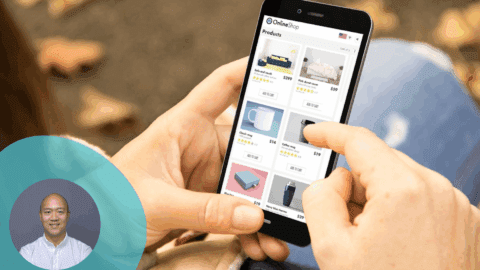It can be easy to fall into clichéd thinking about retail — like “Millennials care about experiences over products” or “e-Commerce is reducing the amount of time people spend shopping.” But how much truth do these clichés really hold? Deloitte dug through both its own insights and government data to discover the limits of conventional wisdom in its report, titled The Consumer Is Changing, But Perhaps Not How You Think.
“What we found was pretty interesting,” said Bobby Stephens, Leader in the Retail & Consumer Products Practice at Deloitte. “In many cases we found that the conventional wisdom was either just not right or was not supported by the data, or it was true but only for part of the population.”
Some of the often-repeated ideas examined in the research include:
- Millennials spend more on experiences, which is why they’re spending less at shopping centers;
- Consumers care about values and personalization nearly as much as price and convenience; and
- People are spending less time shopping because they have less free time overall.
Generational Trends Aren’t Killing Malls — It’s The Economy, Stupid
The media is abuzz with stories about how Millennials want experiences rather than products — but a deep dive into 30 years of Bureau of Labor statistics shows that this simply isn’t true, according to Deloitte. While shoppers between the ages of 25-34 spent 5% of their discretionary budget on entertainment in 1997, this figure actually declined to 4% in 2017.
There is a kernel of truth to the conventional wisdom: high-income Millennials are spending nearly one third of their discretionary income on entertainment and dining out, and the absolute dollars spent on entertainment rise along with income. However, this behavior is similar among the wealthier members of all generations, not just Millennials.
This trend also may be affecting mall traffic: the mix of trips by high-income consumers is skewed 2.4% more toward hospitality, travel and entertainment compared to low-income groups, and they spend more of their wallet online (27% versus 19% for low-income shoppers). However, high-income shoppers alone can’t account for the total decline in on-mall shopping trips (down 7.6%) or the slight increase in off-mall shopping trips (up 0.5%) seen in 2018.
Another factor that may be keeping low-income shoppers away from malls: they are spending more of their money on nondiscretionary items such as health care expenses, housing costs and education. In 2017, 17% of Millennials’ wallet share went toward these items, compared to just 12% for the same age group in 1997. A tighter wallet makes these consumers more likely to research deals online to find the best price before leaving the house, rather than browsing at a mall.
“The consumer who has plenty of disposable income has choices, and they’re interacting directly with brands and picking things up through mobile e-Commerce,” said Stephens. “Whereas the folks with low income are really spending more time trying to find a great deal. A lot of time the best deal isn’t always at the mall, it’s at places like a dollar store, or an off-price department store or even a convenience store.”
Price Still Beats Out Personalization And Alignment with Core Values
The rise in nondiscretionary spending may also be why, despite the growing importance of personalization and values-based messaging, shoppers still care about price and convenience above all else. Consumers said their top reasons for selecting a retailer are:
- Great deals (17.3%);
- Availability of products (14.6%);
- Convenience to shop (12.7%);
- Ease of finding products at a store or on a web site (9.7%); and
- Easy checkout process (8.2%).
In comparison, only 3.7% of shoppers cited “alignment with core values” as their top reason for selecting a retailer, and just 3.3% said they were looking for a “personalized experience.” These preferences held true across lines of age or income, even among groups that are often outliers.
“We talked to 4,000+ consumers, and they ranked things like ‘I can get a great deal,’ ‘The product was there’ and ‘It was convenient’ highly,” said Stephens. “Attributes that are really around price, product and convenience have to be the baseline. Now, once you have that in place, I think [personalization and values] are a good way to differentiate from other retailers. It just can’t be what you lead with.”
People Spend Less Time Shopping, But Don’t Blame E-Commerce
In 2017, the average person spend 20% fewer minutes shopping every week than they did in 2005 — despite having an average of 14 additional minutes of free time daily, according to the U.S. Census Bureau. However, people aren’t sitting on their couches with smartphones or laptops: consumer-oriented traffic (which includes retail, convenience and hospitality/travel) increased by 6% in April through December 2018 compared to the same period in 2017, according to Deloitte.
The reason for these shorter, potentially less lucrative trips isn’t the ubiquity of mobile shopping or a search for experiences. Instead, people are spending more day-to-day free time on relatively mundane tasks:
- Personal care, like beauty and fitness regimes;
- Household activities, like cleaning or taking care of repairs; and
- Leisure activities, like playing or watching sports.
Shorter shopping times aren’t necessarily a cause for panic: the average revenue per minute created by shoppers has been on the rise at the same time, according to Stephens. While part of this is due to inflation, it’s also cause by options like BOPIS and in-store ordering, which let shoppers make additional purchases more efficiently.
Taken together, the study’s findings indicate that economic factors are what’s driving retail’s current shifts, not the characteristics of any individual generation. Reaching shoppers based on their discretionary spending habits, rather than the preferences of their age cohort, will be the key to success going forward.
“I think retailers and people who participate in the market don’t immediately go here, but the main driver that we’re seeing in most of these behavioral shifts really is the economic portion,” said Stephens. “When you take income and then you look at nondiscretionary expenses, those two things together, that’s where you really see different spending behaviors. The Millennial that everybody talks about as being a different person is really the high-income Millennial, which is only about 5% to 7% of the overall population.”













